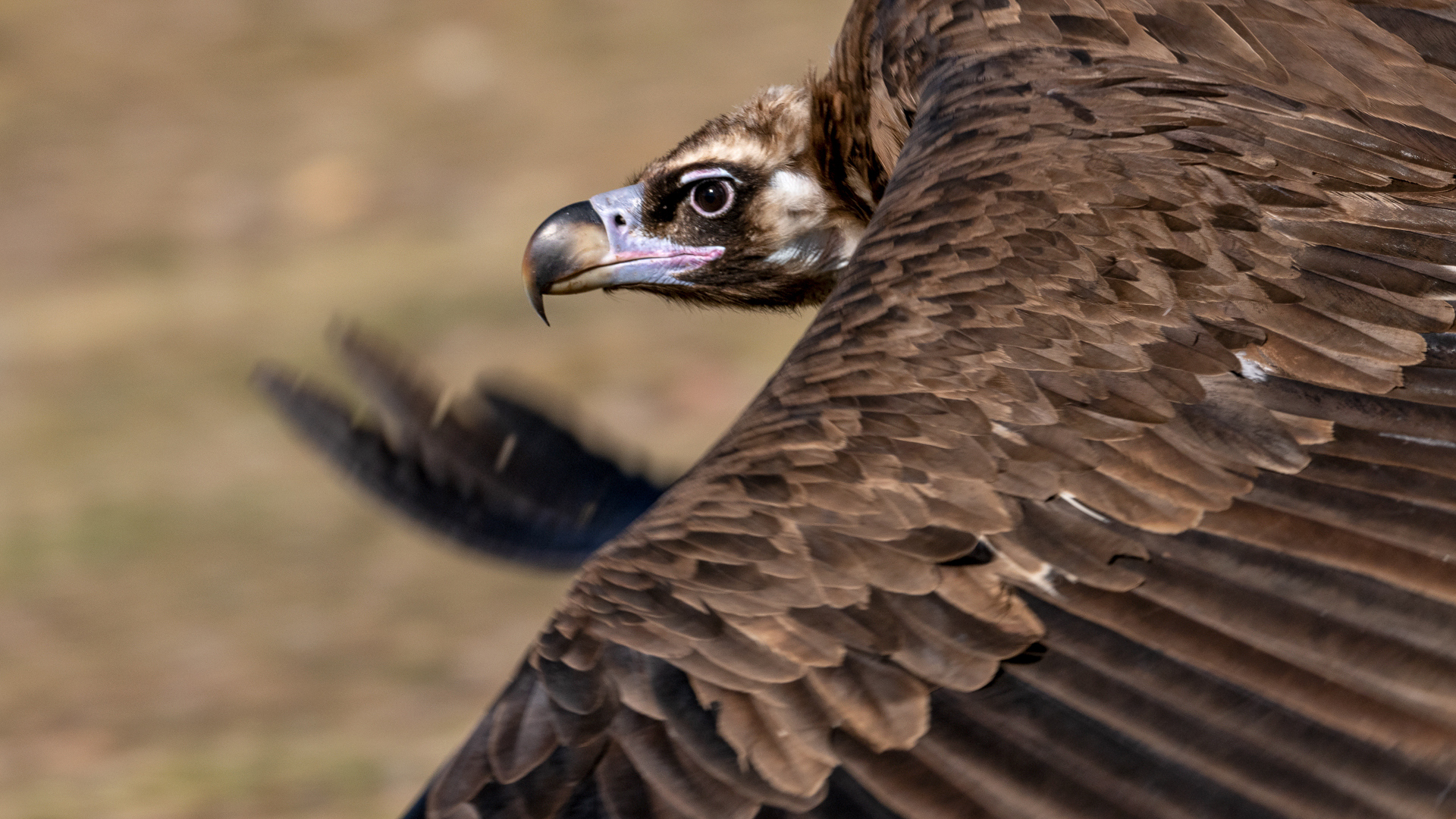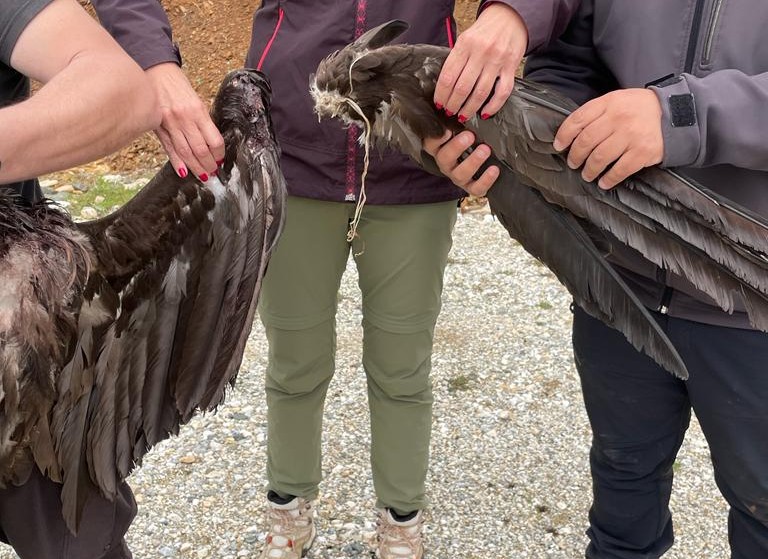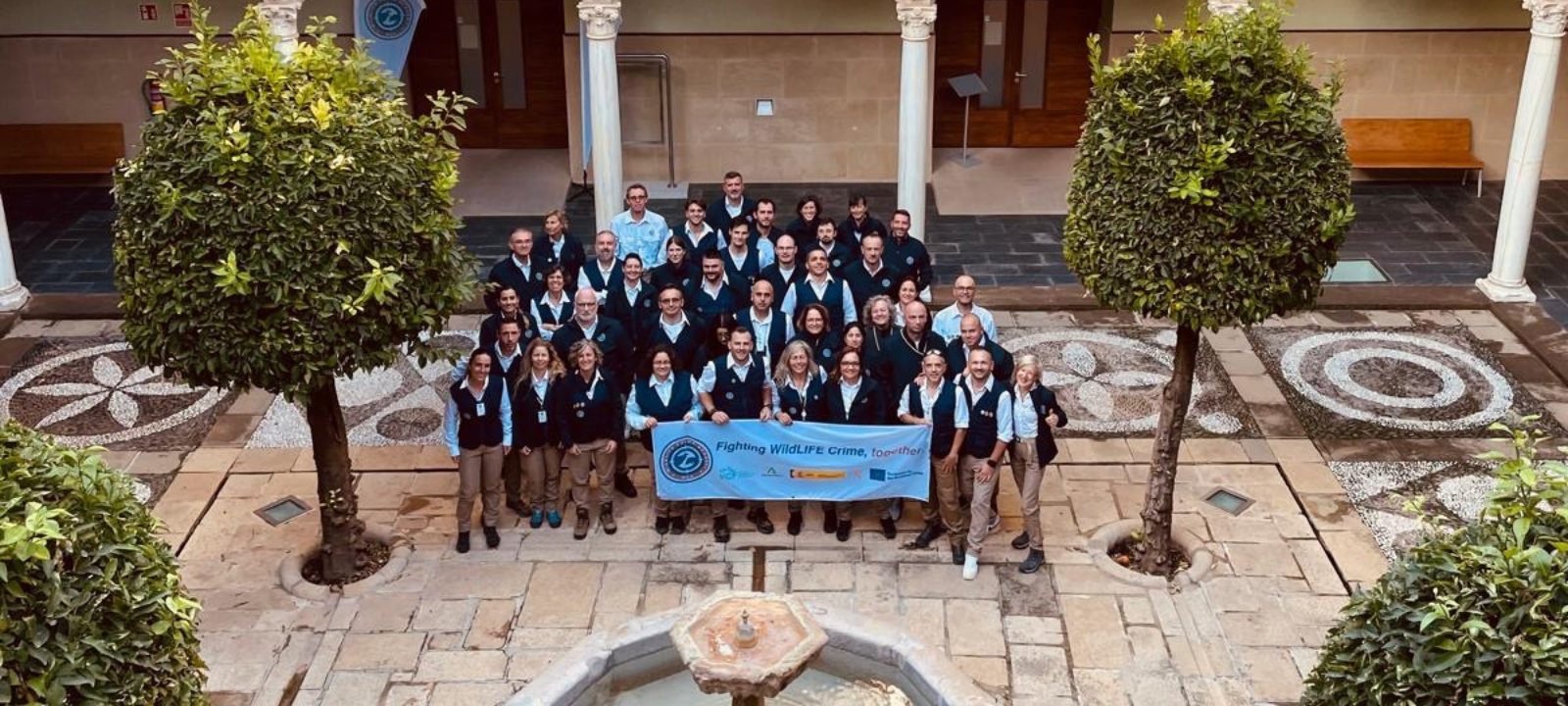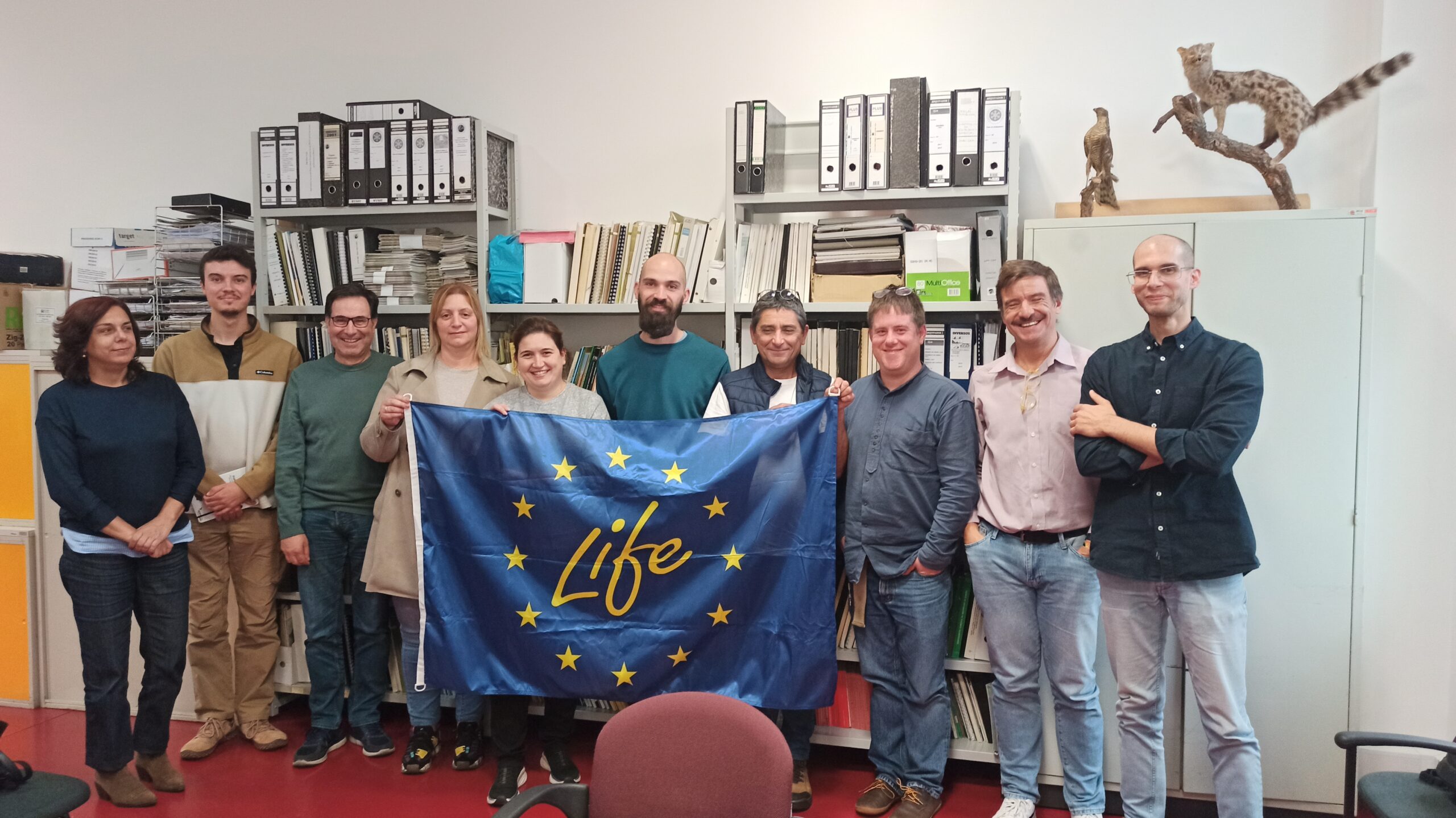A Rüppell’s vulture (Gyps rueppelli) was recently found dead near Beja, in southern Portugal. The circumstances are still under investigation. The bird was being monitored by GREFA as part of ongoing conservation efforts, and its death has triggered a coordinated international response.
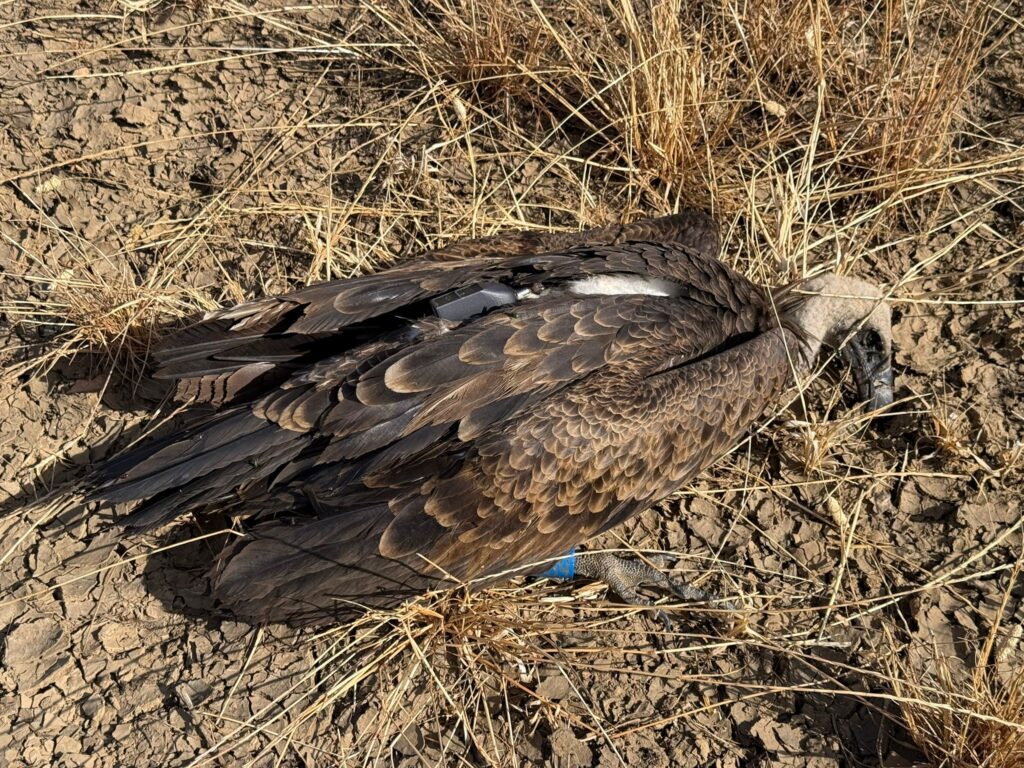
The incident
The alert was first raised on the afternoon of Wednesday, July 2, by GREFA (Grupo de Rehabilitación de la Fauna Autóctona y su Hábitat). Their team noticed that one of the GPS/GSM transmitters assigned to a Rüppell’s vultures (Gyps rueppelli) signalled the vulture might be dead or have lost the tag. The bird’s last known location was near Beja (Portugal), prompting the Spanish team to contact the LIFE Aegypius Return project for help on the ground.
The Portuguese police GNR (Guarda Nacional Republicana), partner in LIFE Aegypius Return, was immediately informed. They promptly organized field searches to hopefully retrieve only a lost tag. Hoping for the best, but preparing for the worst, the poison detection dog unit was also deployed as part of the protocol for retrieving dead vultures.
Early on the next morning, July 3, a GNR patrol located the vulture. The bird was unfortunately dead. Its carcass was collected following the Antidote Protocol — the formal procedure that ensures proper evidence handling in suspected poisoning cases. It was transported to the Veterinary Hospital of the University of Évora, the reference institution for necropsy and forensic analysis in the region. The anti-poison dog unit searched the area where the vulture was found and expanded its search to every place the bird visited in the previous days. During the research, they found two dead Eurasian jays (Garrulus glandarius) – a potential sign of a poisoning incident. These birds will be analysed alongside the vulture to determine the cause of death.
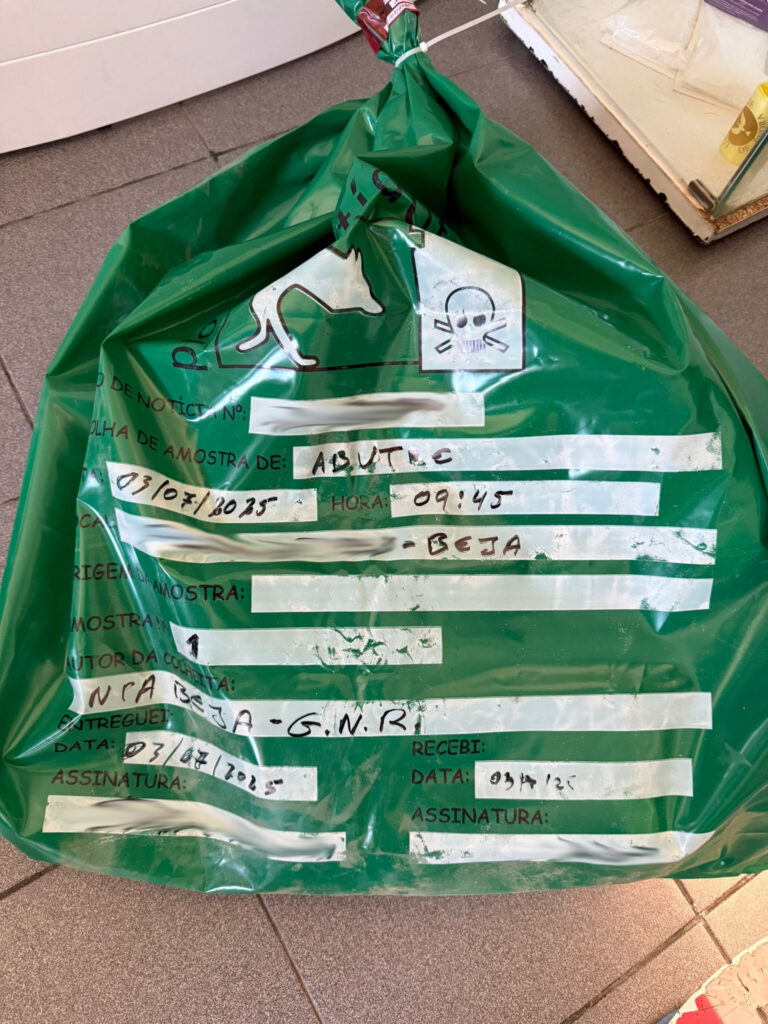
A journey cut short
The Rüppell’s vulture was tagged by Rachid El Khamlichi, from the Jbel Moussa Raptor Rehabilitation Centre, in cooperation with GREFA, in northern Morocco on May 2, 2025. On June 12, it crossed the Strait of Gibraltar, moving towards Europe. Flying north, it passed through Andalusia and arrived near Mérida in Extremadura (Spain) where it stayed for about a week.
On June 28, it crossed into Portugal, flying over Serpa and Beja. According to the GPS/GSM transmitter data, it seemed to behave normally, roosting in a farmland tree for the night. However, on June 29, it showed unusual movement patterns — flying short distances and switching roosting sites within a one-kilometre radius. By the morning of June 30, the bird was dead, just 60 meters from its last roosting tree.
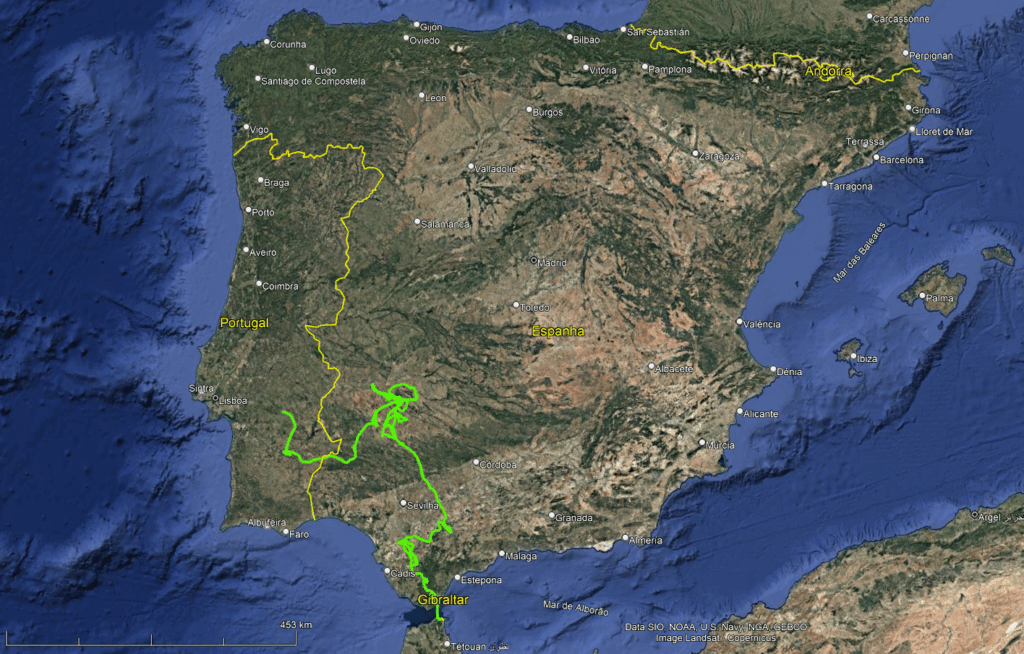
A cross-border conservation commitment
The Rüppell’s Vulture is globally classified as Critically Endangered according to the IUCN’s Red List of Threatened Species , but it is no longer a rare sight in Europe. Despite the species rapid decline in its native range in Africa, the number of Rüppell’s Vultures in Europe is growing, especially in Spain and Portugal. This increasing trend pushed Andalusia to add the species to its list of vultures, making Rüppell’s Vultures Europe’s 5th vulture species.
Every year, an average of 70 young Rüppell’s Vultures follow their close relatives, the Griffon Vultures (Gyps fulvus) during their migration from the wintering grounds in Africa to Europe. Several birds, like the one that recently died in Portugal, are part of an international effort to monitor the Rüppell’s Vultures colonization of Europe. This network, the Rüppell’s Vulture working group, involves Junta de Andalucia, IUCN-MED, GREFA, Fundacion Migres, Association Marocaine pour la Protection des Rapaces AMPR, Wildlife-lab Estación Biológica de Doñana, the Vulture Conservation Foundation and SEO BirdLife.
The investigation on the death of the Rüppell’s Vulture in southern Portugal is still ongoing, and will probably be shared among Portuguese and Spanish authorities. This case proves once again how crucial international collaboration is in vulture conservation. The results of the investigation will contribute to better understand the threat this newly arrived species faces in Europe and how we can actively contribute to its survival.
About LIFE Aegypius Return
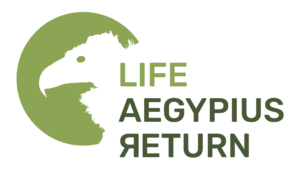
The LIFE Aegypius Return project is co-financed by the European Union’s LIFE programme. Its success depends on the involvement of all the relevant stakeholders, and the collaboration of the partners: the Vulture Conservation Foundation (VCF), the coordinating beneficiary, and the local partners Palombar – Conservação da Natureza e do Património Rural, Herdade da Contenda, Sociedade Portuguesa para o Estudo das Aves, Liga para a Protecção da Natureza, Associação Transumância e Natureza, Fundación Naturaleza y Hombre, Guarda Nacional Republicana and Associação Nacional de Proprietários Rurais Gestão Cinegética e Biodiversidade.

